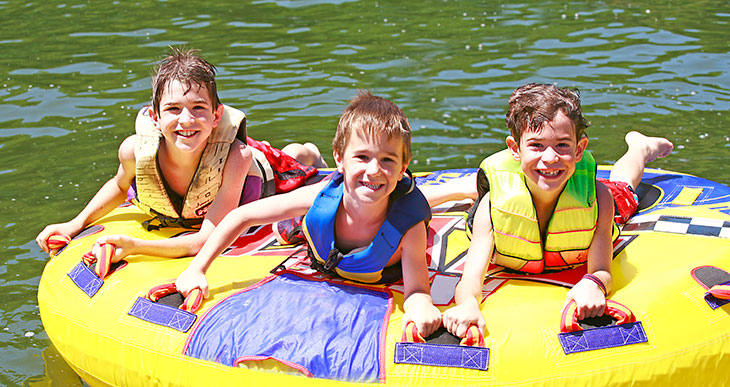
It's a scary statistic for parents: Drowning is a leading cause of death for children.
In the United States each year, there are an estimated 4,000 unintentional drowning deaths – an average of 11 per day. There are an estimated 8,000 drownings per year that don't result in death but can cause many other long-term health problems, according to the Centers for Disease Control and Prevention (CDC).
It's important to remember that children can drown in 2 inches of water. Most drownings are preventable, so learn what you can do to protect your children.
1. Keep your eyes on your children at all times around water.
When you and your children are near any water, your undivided attention is most important. A drowning can occur in seconds. While your children are swimming, watch them at all times. Even looking at your cellphone can be enough time for a child to drown. These principles also apply when children are taking a bath or around other water in or near your house.
Most young children who drown in pools were seen in the house less than five minutes before the drowning occurred. Most of the time one or both parents are home.
Read these 10 tips to protect your child from drowning
2. Children should wear a life jacket.
Life jackets are especially important for children when around lakes, rivers, oceans and other natural waterways. Parents and other adults can set good examples by wearing life jackets, too. Make sure life jackets fit properly and are approved by the U.S. Coast Guard.
Life jackets can reduce the risk of drowning for people of all ages, especially when on a boat, near the river, or in any large body of water. Do not rely on air-filled floaties or foam toys. These toys are not designed to keep swimmers safe.
See how to use a life jacket and more water safety tips from the American Red Cross
3. Children should learn basic swimming skills.
Children who take formal swimming lessons have a reduced risk of drowning. Children can begin water survival skills training between ages 1-4. Getting parents involved with their children in the water is a good way to start building good water safety and swim readiness skills.
Even if your child has taken swim lessons, you should still keep a close eye on them while they're in and around water.
Learn about when to start your children in swim lessons
4. Be aware of limited visibility around water.
There are many hazards that can make it hard to see around natural bodies of water. These include rocks, grasses, waves and toys. Even the inside edge of a pool can be hard to see over if you're not right on top of it.
You may think your child is safe walking in knee-height water, but then the ground can suddenly drop steeply. Undertow and water current are also unseen hazards that can be deadly for people of any age.
Get tips to stay safe while swimming in lakes and rivers
Learn more about 5 hidden hazards of open water
5. Pick a person who only watches the children.
If you're at a party or with a larger group of people, it's easy to get distracted. Designate someone to be responsible for only watching children in and around the water. Then switch out every 15 minutes or so to give people a break. That ensures someone is keeping full attention on the children. Don't leave children or babies under the care of other children.
6. Talk with teens about the dangers of water.
Parents should have conversations with their teenager about the dangers of diving into rivers and oceans from rocks or bridges. Older teens, especially boys between the ages of 15 and 19, are at high risk of drowning. Boat-related injuries account for a fifth of these cases. Many of these incidents are a result of high-risk behavior, drugs or alcohol.
Learn more about water safety for teens and why the drowning risk increases
7. If you have a pool, enclose it with a fence.
Pool areas should be completely enclosed with a fence at least five feet high. The fence should separate the pool from the house. An iron fence with vertical bars three inches apart is recommended. It should be self-closing and self-latching, with a latch near the top of the fence. Children should not be able to climb the fence. Keep all chairs and anything else children can climb on away from the fence.
Pool covers and alarms are helpful but are not a substitute for good fencing. Children can become trapped under soft pool covers, putting them at risk of drowning.
See why pediatricians stress the importance of fencing around swimming pools




